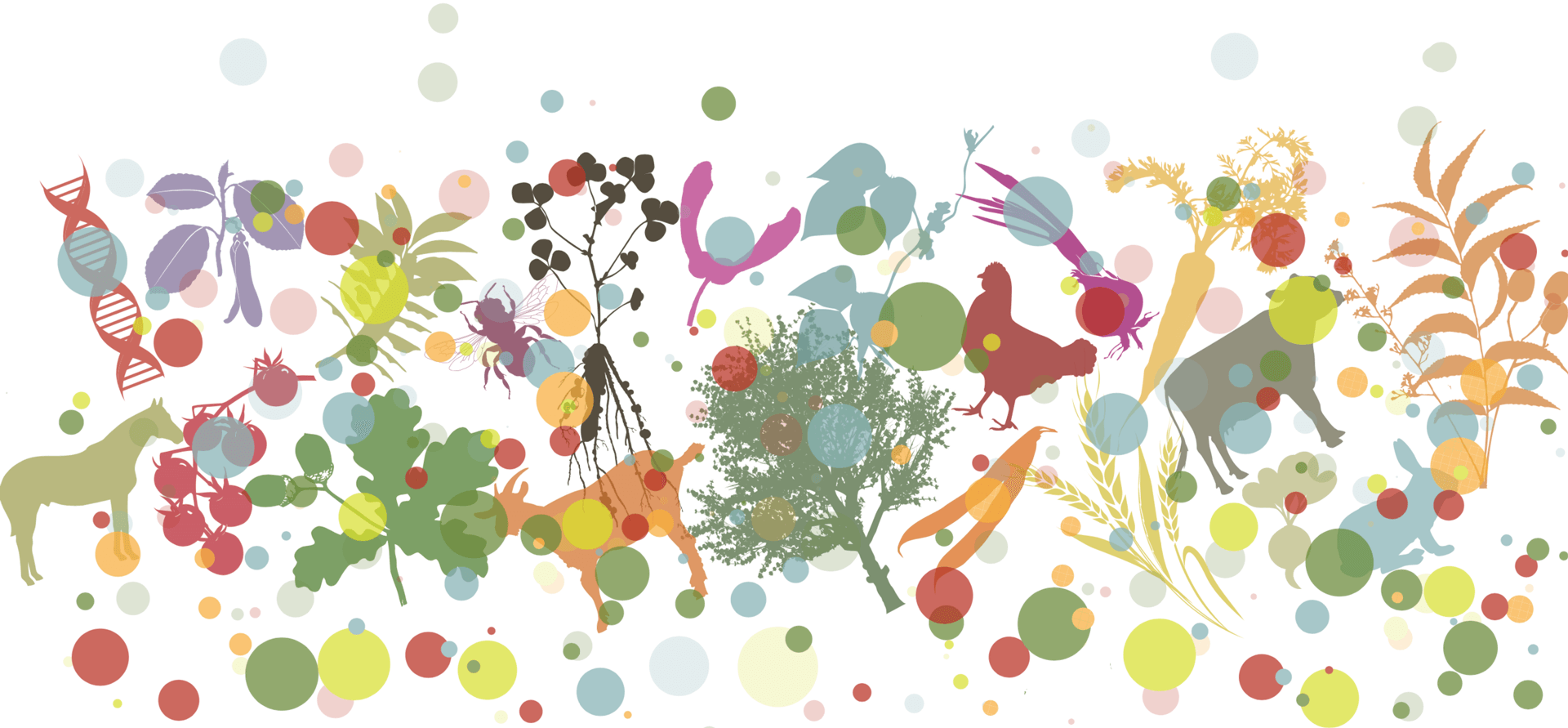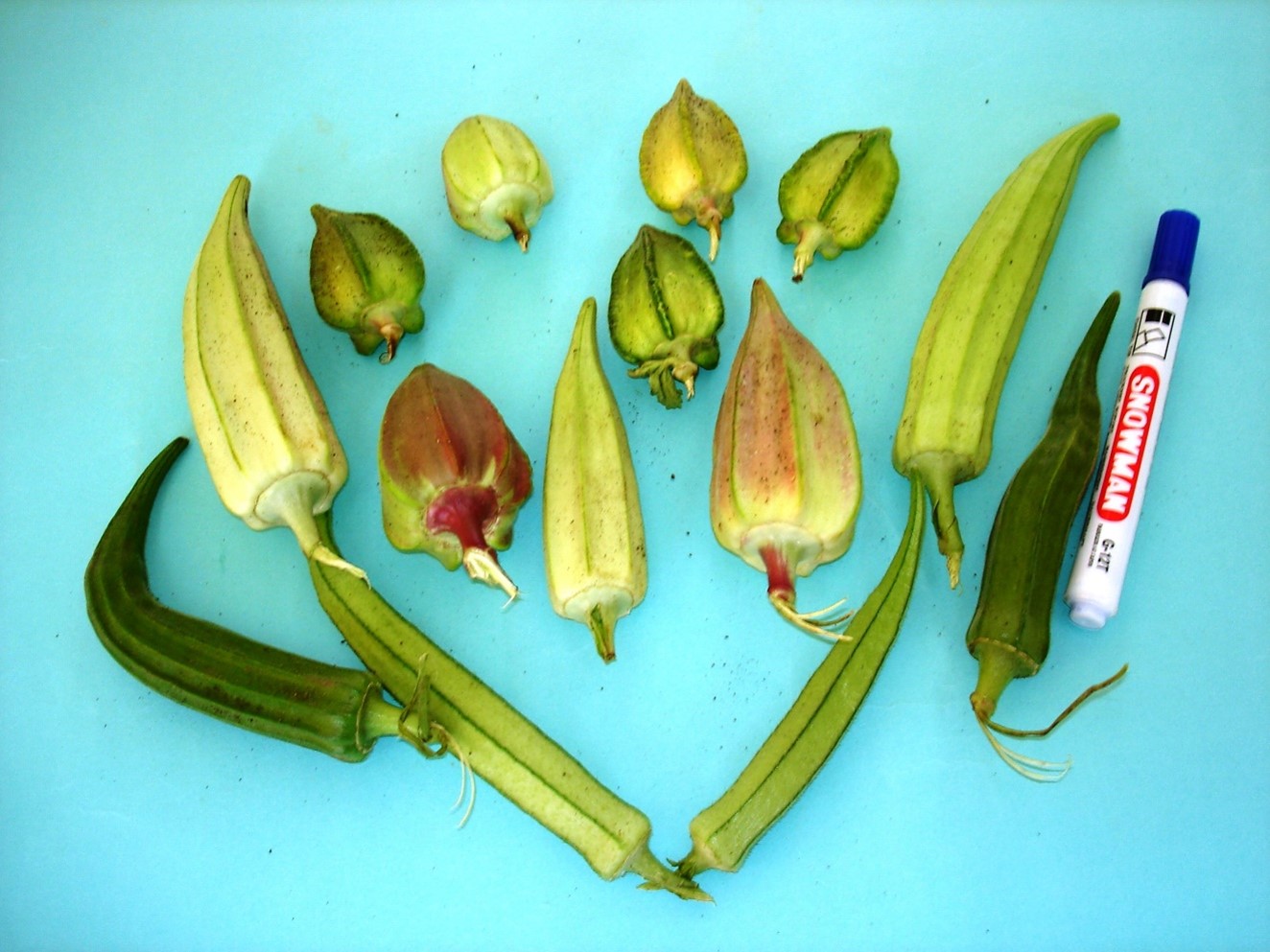Phenotypic variations among okra (Abelmoschus esculentus (L.) Moench) genetic resources in Sudan
Main Article Content
Abstract
A total of 366 accessions of okra (Abelmoschus esculentus (L.) Moench) obtained from the Agricultural Plant Genetic Resources Conservation and Research Centre (APGRC) in Sudan were characterized for a number of morphological characters using a descriptor list derived from the list published by the International Board for Plant Genetic Resources in 1984. Those accessions, which were collected from different regions of Sudan, were grown in the APGRC research farm in Wad Medani town in central Sudan during ten different seasons within the period between 2000 and 2019. Phenotypic variations were observed among and within the different accessions for plant, stem, leaf, inflorescence and fruit characters. Up to 59% of accessions were found to be heterogeneous for different traits. The descriptor states observed ranged from very rare in 5%or less of the accessions, to abundant in more than 90% of the accessions. Substantial phenotypic variation was observed for okra fresh fruits, the main organs used for food, in terms of shape, colour, pubescence and number of ridges. Accessions carrying fruits preferred in local or foreign markets were identified making them good candidates for further breeding to produce new cultivars for both markets. The cluster analysis resulted in 13 subclusters at a similarity level of 60%. When comparing the subclusters with collection sites, no direct relation was detected indicating that okra germplasm has been spreading all over the country resulting in diversified materials across different regions.
Article Details

This work is licensed under a Creative Commons Attribution 4.0 International License.
Authors retain copyright of the articles published in Genetic Resources and grant the journal right of first publication with open access. All articles published in Genetic Resource are licensed under Creative Commons Attribution 4.0 International License (CC BY 4.0) that allows others to download, share and adapt the work for commercial and non-commercial purposes as long as proper attribution to the original article is given. Genetic Resources permits and encourages authors to post items submitted to the journal (including the publisher's final layout) on personal websites or institutional repositories after acceptance and/or publication, while providing bibliographic details that credit their publication in Genetic Resources.
Ahmed, M K and E I Mohamed (1995). “Indigenous vegetables of Sudan: Production, utilization and conservation”. In: Traditional African Vegetables. Ed. by L Guarino. Vol. 16. Rome, Italy: Institute of Plant Genetics and Crop Plant Research, Gatersleben/International Plant Genetic Resources Institute, pp. 29–31.
Charrier, A (1984). Genetic resources of the genus Abelmoschus Med. (Okra). Rome, Italy: IBPGR, p. 61.
Geneif, A A (1984). “Tapping natural genetic variability of okra in the Sudan”. In: Acta Horticulturae 143, Eighth African Symposium on Horticultural Crops, Wad Medani, Sudan, 20-24 March 1983, pp. 175–181. DOI: https://doi.org/10.17660/ActaHortic.1984.143.17
Hamon, S and D H Van Sloten (1989). “Characterisation and evaluation of Okra”. In: The Use of Plant Genetic Resources. Ed. by A H D Brown et al. Cambridge University Press, pp. 173–196.
I Mohamed, E (1991). “Okra Genetic Resources in Sudan”. In: IBPGR. Report of an International Workshop on Okra Genetic Resources. International Crop Network Series 5. Rome: International Board for Plant Genetic Resources, pp. 34–35.
Ishag, H M and M F Said (1985). Groundnut production in irrigated vertisols of Gezira: Achievement and problems. Proceeding of fifth international soil classification workshop. Khartoum, Sudan, pp. 323–329.
Kumar, S et al. (2011). “Okra (Abelmoschus spp.) in West and Central Africa: Potential and progress on its improvement”. African Journal of Agricultural Research 525(25), pp. 3590–3598. URL: http://oar.icrisat.org/168/.
Omonhinmin, C A and M E Osawaru (2005). “Morphological characterization of two species of Abelmoschus esculentus and Abelmoschus caillei”. Plant Genetic Resources Newsletter 144, pp. 51–55. URL: https://hdl.handle.net/10568/104205.
Oppong-Sekyere, D et al. (2011). “Characterization of okra (Abelmoschus spp. L.) germplasm based on morphological characters in Ghana”. Journal of Plant Breeding and Crop Science 3(13), pp. 367–378. URL: https://academicjournals.org/journal/JPBCS/article-full-text-pdf/CC378699610
Schippers, R R (2002). “African Indigenous Vegetables, An overview of the cultivated species”. Natural Resources International Limited.
Siemonsma, J S and S Hamon (2004). “Abelmoschus caillei (A.Chev.) Stevels”. In: In Plant Resources of Tropical Africa 2. Vegetables. Ed. by G J H Grubben and O A Denton. PROTA Foundation, Wageningen, Netherlands / Backhyus Publishers, Leiden, Netherlands / CTA, Wageningen, Netherlands, pp. 21–25.
Siemonsma, J S and C Kouamé (2004). “Abelmoschus esculentus (L.) Moench”. In: Plant Resources of Tropical Africa 2. Vegetables. Ed. by G J H Grubben and O A Denton. PROTA Foundation, Wageningen, Netherlands / Backhyus Publishers, Leiden, Netherlands / CTA, Wageningen, Netherlands, pp. 25–29.
Singh, H B, V Swarup, and B Singh (1975). Three Decades of Vegetable Research in India. ICAR Tech. Bull. New Delhi: ICAR.
Temam, N, W Mohammed, and S Aklilu (2021). “Variability Assessment of Okra (Abelmoschus esculentus (L.) Moench) Genotypes Based on Their Qualitative Traits”. International Journal of Agronomy 2021. DOI: https://doi.org/10.1155/2021/6678561. DOI: https://doi.org/10.1155/2021/6678561







 This journal has been conceived as part of the
This journal has been conceived as part of the